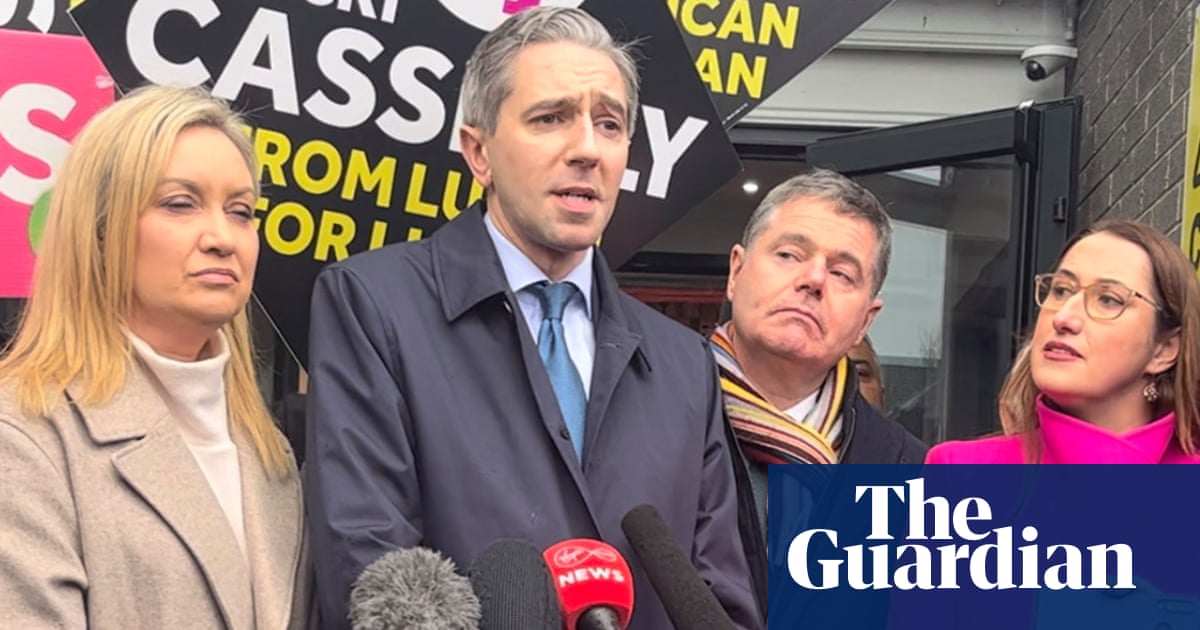Ireland goes to the polls on Friday with voters expected to choose either a second term for the incumbent centre-right coalition or a left-leaning rainbow coalition led by a resurgent Sinn Féin, the former political wing of the IRA.
Opinion polls show a dead heat, with the two main government parties – Fine Gael, led by the taoiseach, Simon Harris, and Fianna Fáil, led by the former PM Micheál Martin – and Sinn Féin all hovering at about 20% of the vote.
Priorities for all parties have never veered too far from housing, the cost of living crisis and to a minor extent immigration, leaving little between them in terms of distinguishing moments in a short, sharp, three-week campaign.
Fine Gael claims a Sinn Féin government would spell economic risk in the face of Donald Trump’s second term as president. Trump’s threats of tariffs on EU exports and the promise to repatriate jobs are seen as a major peril for Ireland.
Fianna Fáil’s Martin, one of the most experienced political leaders in Ireland, has also been pushing economic stability while telling voters that housing and support are among his other priorities.
With a threshold of 88 seats for a clear majority in the Dáil, and no party in the previous election getting more than 38, a coalition is the likely outcome after Friday’s vote.
Fianna Fáil and Fine Gael have ruled out working with Sinn Féin, hoping to lock it out of power for another five years.
On the last day of campaigning, the Sinn Féin leader, Mary Lou McDonald, appeared to have a renewed sense of confidence and signalled for the first time that she would be willing to talk to leftwing parties, the Social Democrats, Labour and the People Before Profit group, to form a leftist coalition were the right numbers to emerge when polling closes.
“We started off with the big two, the two establishment parties [Fianna Fáil and Fine Gael], assuming that they had a home run, assuming that they would simply waltz back into government buildings. We never thought that was going to happen,” she told reporters.
“I’m asking people to come out and vote for that, not just for Sinn Féin but vote to change the government.” She said this week’s dead-heat polls showed “there is a world beyond Fianna Fáil and Fine Gael”.
Ireland uses a system of proportional representation called single transferable vote (PR-STV) allowing voters to rank candidates by preference. This means that “lending” a second-preference vote has the power to translate into Dáil seats.
Echoing efforts by the Liberal Democrats and others in the UK who have urged tactical voting in general elections to ensure success for progressive parties, Sinn Féin is asking the public to lend their votes to it or to other parties on the left, rather than voice any unhappiness with incumbents by opting for one of the 171 independent candidates.
The independents could emerge as kingmakers as they did in the 1980s and 1990s, with polls suggesting they could also garner a 20% share of the vote.
The Green party, the third party in the outgoing government with 12 seats in the Dáil, is projected to lose seats but hopes to be invited into a coalition, while the Social Democrats (currently with six seats) and Labour (six seats) are jostling for the same position.

